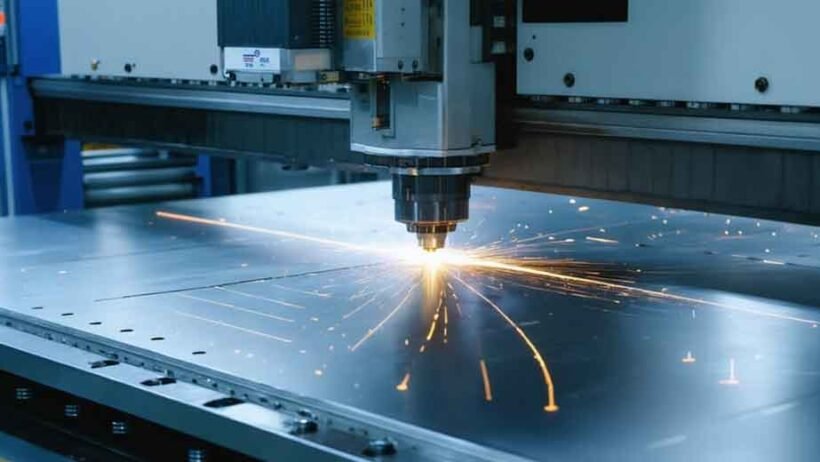Steel poles support increased customization, making them a versatile solution in various utility projects. They’re used in power distribution poles, light posts, and transmission systems. You can partner with a utility construction company to customize pole configurations for the intended application. Here are a few modern fabrication techniques that make today’s steel poles lighter and stronger:
High-Strength Steel
Many modern utility pole manufacturers use high-strength low-alloy (HSLA) steel in place of traditional carbon steel for improved performance. HSLA involves blending small amounts of elements, such as chromium, nickel, and copper, which increase toughness. This approach also supports the production of thinner steel sheets while maintaining strength. Using HSLA steel allows designers to reduce wall thickness and overall weight while maintaining structural performance. HSLA steel is used for lighting, transmission, and communication applications. The reduced weight simplifies transportation and installation, helping to reduce downtimes during large projects.
When combined with galvanization or protective coatings, HSLA poles offer enhanced corrosion resistance and longer lifespans in urban and coastal environments. You can collaborate with a utility construction company to customize pole strength and integrations based on installation requirements. Aspects, such as steel thickness and resistance, are calculated to deliver poles that can withstand heavy winds and loads. Cross arms and other integrations are also designed to match strength requirements. HSLA steel poles offer increased resilience against bending forces and can remain in service for several decades with minimal maintenance.
Precision Forming
Digital production technologies and automation enable the precise fabrication of steel poles. Modern forming machines bend and shape steel plates into tapered or polygonal pole sections with computer-controlled precision. Each pole is designed to maintain consistent wall thickness and achieve seamless joints and connections.
Robotic welding systems also join sections with uniform precision, eliminating uneven joints and human error. Computer-aided inspections detect defects early, verifying only high-quality poles proceed to installation. The result is smooth, continuous surfaces that support structural integrity under changing weather conditions and heavy loads.
Precision forming also allows manufacturers to customize pole design and geometry for the application. Contractors can order tapered or straight designs that match wind and weight requirements. Automated quality checks are built into the production line, verifying each weld and curve for strength and balance. Custom features such as mounting brackets or attachment points are incorporated into the design, reducing the need for field modifications that could compromise strength. Grounding systems are also built into the framework and optimized for installation conditions.
Corrosion Protection
Modern steel poles feature enhanced galvanization and surface coatings that protect the material from corrosion. Galvanization involves hot-dipping the steel in molten zinc to form a corrosion-resistant protective coating. The steel is covered from moisture exposure, and the zinc layer bonds permanently to its surface. Zinc resists oxidation, slowing the corrosion process while protecting the steel under the layer. The coating also enhances surface appearance and durability while adding minimal additional weight.
Some manufacturers use powdered coatings that prevent corrosion and reduce surface tarnishing caused by prolonged exposure to weather elements. These coatings reduce maintenance needs and extend the service life of steel pole installations in harsh environments. Modern coatings create smoother surfaces that resist dirt accumulation and inhibit biological growth. Smooth, clean surfaces also support inspections. Galvanization and advanced finishing maintain the strength and visual appeal of steel poles without affecting their weight or structural integrity.
Quality Testing
Modern fabrication techniques involve automatic quality testing that checks every pole section. Manufacturers test each pole to verify that it meets specific performance standards. They use various tools to detect thickness variations, weak welds, and internal flaws early in production. Real-time testing may help reduce rejection rates, resulting in consistent production quality and minimal waste. Steel pole manufacturers also use modular fabrication that enables the production of poles in sections. Smaller sections are thoroughly inspected and tested to verify that they meet strength, load, and corrosion performance requirements.
Advanced testing procedures simulate real-world stress factors, such as wind pressure, vibration, and temperature fluctuations. These tests confirm how well the poles perform under operational load and extreme weather events. Maintenance records and other performance metrics from old installations are used to inform and improve testing approaches and pole design. They can identify recurring weak points, allowing manufacturers to continuously improve pole configuration and performance.
Speak to a Utility Construction Company Today
Steel poles offer high design flexibility, allowing manufacturers to tailor structural strength, dimensions, and mounting features to specific project requirements. The material is also lightweight and resilient against stressors, such as harsh weather and pests. Contact a utility construction company today to find out more about steel poles.








